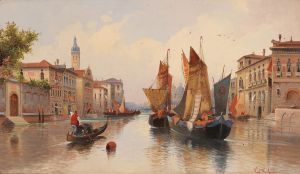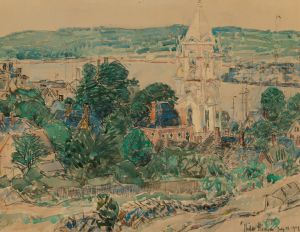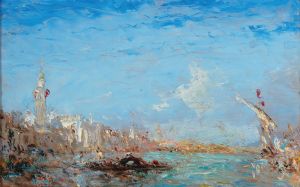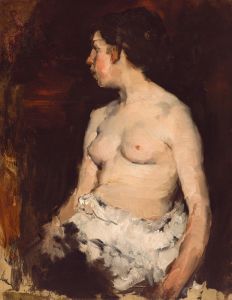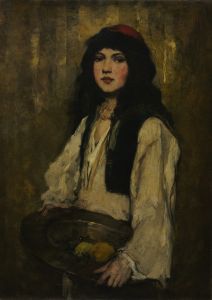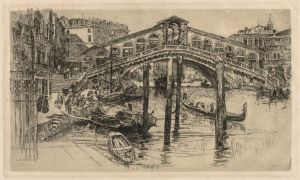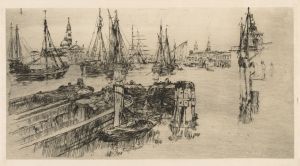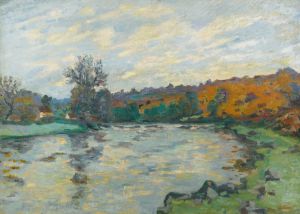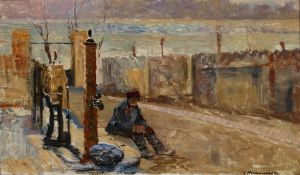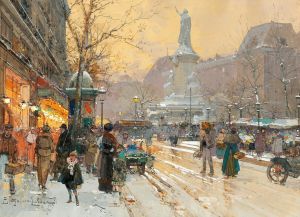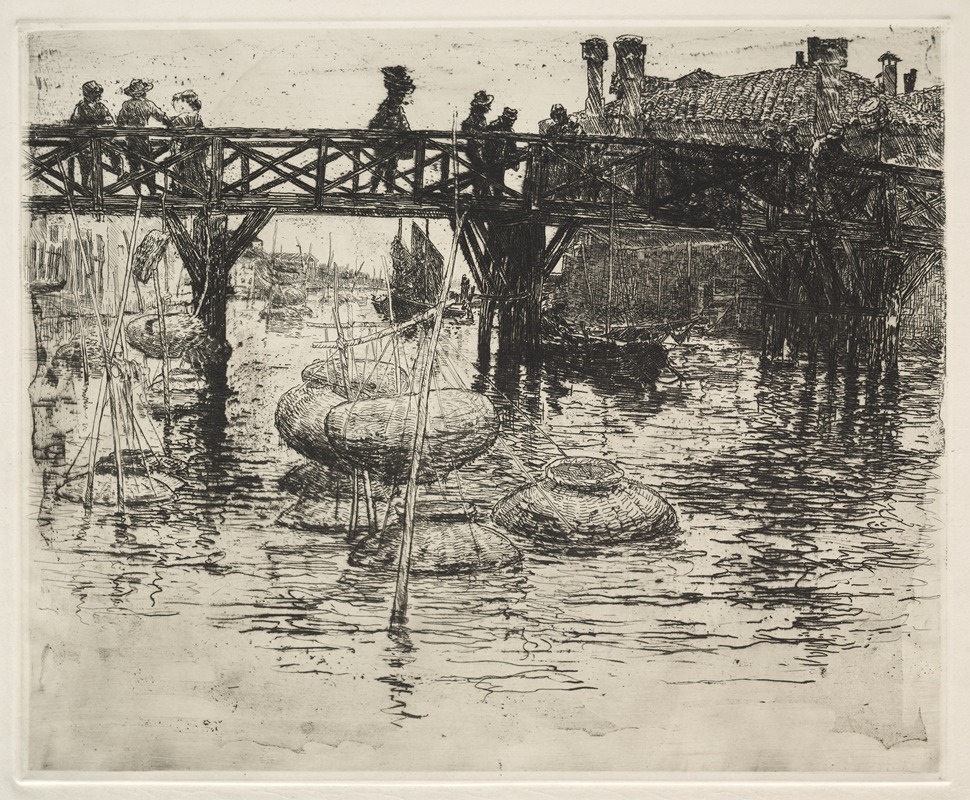
San Pietro in Castello, Venice
A hand-painted replica of Frank Duveneck’s masterpiece San Pietro in Castello, Venice, meticulously crafted by professional artists to capture the true essence of the original. Each piece is created with museum-quality canvas and rare mineral pigments, carefully painted by experienced artists with delicate brushstrokes and rich, layered colors to perfectly recreate the texture of the original artwork. Unlike machine-printed reproductions, this hand-painted version brings the painting to life, infused with the artist’s emotions and skill in every stroke. Whether for personal collection or home decoration, it instantly elevates the artistic atmosphere of any space.
Frank Duveneck was an American painter known for his influential role in the American art scene during the late 19th and early 20th centuries. One of his notable works is "San Pietro in Castello, Venice," which captures the essence of the Venetian landscape through Duveneck's unique artistic lens. This painting reflects Duveneck's mastery in handling light and shadow, as well as his keen eye for architectural detail.
Duveneck was born in 1848 in Covington, Kentucky, and he developed his artistic skills in Europe, studying at the Royal Academy of Fine Arts in Munich. His time in Europe greatly influenced his style, which is characterized by a blend of realism and impressionism. Duveneck's work often features rich, dark tones and a strong emphasis on the play of light, which can be seen in "San Pietro in Castello, Venice."
The painting depicts the Church of San Pietro di Castello, a historic church located in the Castello district of Venice. This church holds significant historical importance as it was once the cathedral of Venice before St. Mark's Basilica assumed that role. The church's architecture, with its distinct Renaissance and Baroque elements, is captured in Duveneck's painting with meticulous attention to detail.
In "San Pietro in Castello, Venice," Duveneck employs a palette that reflects the atmospheric conditions of Venice, using muted tones to convey the serene yet vibrant ambiance of the city. The composition likely includes the church's façade and its surroundings, showcasing Duveneck's ability to render architectural forms with precision while also capturing the essence of the Venetian environment.
Duveneck's time in Venice was part of his broader European travels, during which he was deeply influenced by the Old Masters and the vibrant art scenes of cities like Munich, Florence, and Venice. His Venetian works, including "San Pietro in Castello, Venice," demonstrate his fascination with the interplay of light and architecture, as well as his ability to convey the unique character of the places he visited.
The painting is a testament to Duveneck's skill in capturing the spirit of a location through his art. His works from this period are celebrated for their atmospheric qualities and their ability to transport viewers to the scenes depicted. "San Pietro in Castello, Venice" is no exception, offering a glimpse into the tranquil yet dynamic world of Venice through Duveneck's artistic vision.
Frank Duveneck's contributions to art extend beyond his paintings; he was also a respected teacher and mentor to many young artists. His influence is evident in the works of his students and in the broader American art movement of the time. Duveneck's legacy is preserved in his paintings, which continue to be appreciated for their technical excellence and emotive power.
Overall, "San Pietro in Castello, Venice" exemplifies Frank Duveneck's ability to blend realism with impressionistic elements, creating a work that is both visually striking and evocative of the historical and cultural richness of Venice.





